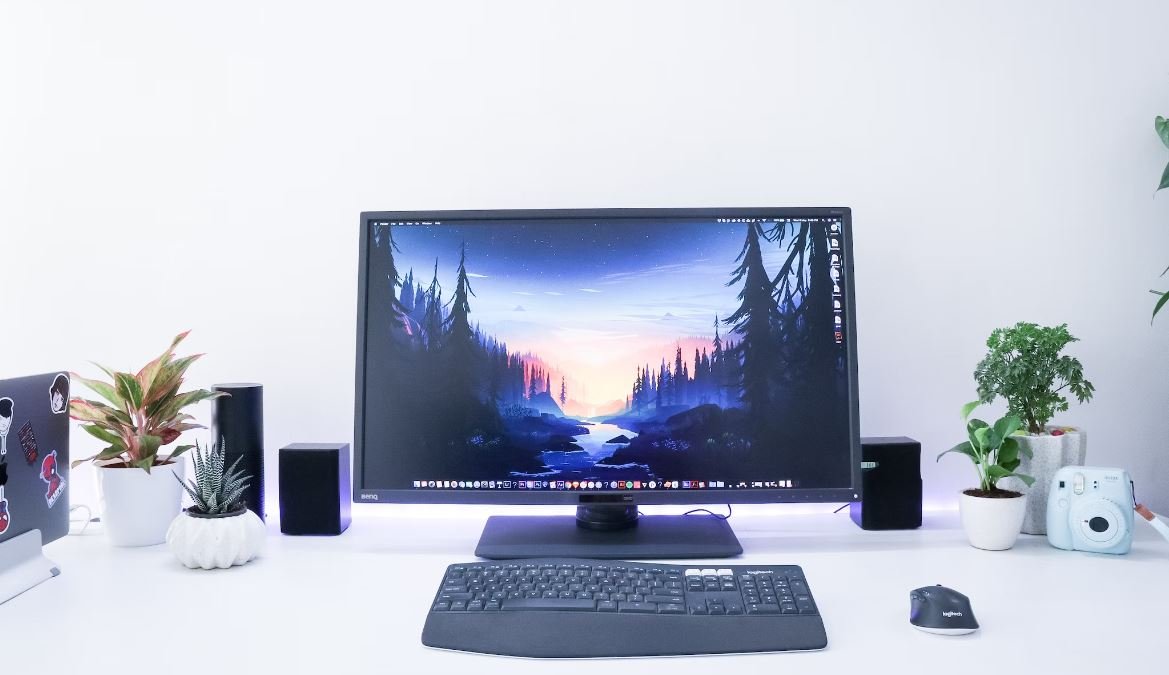Make Apps Run in Background Android
Running apps in the background on an Android device can be a useful feature that allows users to multitask and maintain productivity. However, it’s essential to manage background processes properly to avoid negatively impacting device performance and battery life. In this article, we will explore various methods to make apps run seamlessly in the background on Android.
Key Takeaways:
- Understanding background app processing is crucial for efficient multitasking on Android.
- There are multiple techniques available to customize background app behavior on Android.
- Properly managing background processes is essential to maintain device performance and battery life.
- Developers should optimize their apps to minimize resource consumption in the background.
Methods to Enable Background App Processing
To enable apps to run in the background on Android devices, several methods can be utilized:
- Foreground Service: Use a foreground service to ensure critical tasks continue running even when the app is not in the foreground. This allows apps to perform long-running operations, such as downloading files, while preventing the system from terminating them.
- JobScheduler API: Employ the JobScheduler API to schedule tasks and ensure they run even when the app is not in the foreground. This can be useful for periodic updates or synchronizations.
- WorkManager: Utilize the WorkManager library to execute deferrable background tasks. WorkManager automatically chooses the appropriate execution strategy based on factors like battery status and network conditions.
Table: Comparison of Background Processing Methods
| Method | Advantages | Disadvantages |
|---|---|---|
| Foreground Service | Provides higher priority for critical tasks | May result in increased battery consumption |
| JobScheduler API | Efficiently schedules tasks based on system conditions | Not available in older versions of Android |
| WorkManager | Flexible and reliable background task execution | May have slight delay in task execution |
Optimizing Background Processes
To ensure apps running in the background do not negatively impact device performance and battery life, consider the following optimizations:
- Reduce Background Processing: Minimize the number of background tasks running concurrently to conserve system resources.
- Use AlarmManager Wisely: Be cautious when using AlarmManager to schedule periodic tasks as it may wake up the device frequently, leading to increased battery consumption.
- Implement Efficient Networking: Optimize network operations by using efficient protocols, caching data, and implementing intelligent request management to minimize unnecessary network usage.
Table: Impact of Background Processing on Battery Life
| Background Processing Behavior | Battery Consumption |
|---|---|
| Excessive background processing | High |
| Optimized background processing | Minimal |
Conclusion
Efficiently managing apps running in the background on Android is crucial for optimizing system performance and prolonging battery life. By utilizing foreground services, the JobScheduler API, and WorkManager, developers can ensure seamless multitasking while balancing resource consumption effectively. Additionally, implementing optimizations like reducing background processing and using efficient networking techniques can further enhance device performance. By following these best practices, apps can run smoothly in the background without compromising the user’s overall experience.

Common Misconceptions
Background App Functionality
There are several misconceptions surrounding the ability for apps to run in the background on Android devices. Let’s debunk some of these misunderstandings:
- Background apps drain battery unnecessarily.
- Apps can continue to track your location even when in the background.
- Background apps slow down device performance.
Background App Battery Drain
One common misconception is that background apps drain battery unnecessarily. In reality, Android has strict regulations in place to prevent apps from excessively consuming battery power when running in the background. However, some apps that constantly update and fetch data from the internet may indeed have a small impact on battery life.
- Android’s Battery Optimization feature limits background app activity.
- Power-efficient APIs and guidelines help developers minimize battery drain.
- Periodic background restrictions have been introduced in newer Android versions.
Background App Location Tracking
Another myth about background apps is that they can continue to track your location even when in the background. This is not necessarily true. While apps can request permission to track your location, they typically need explicit permission from the user to access location services in the background.
- Android prompts users to grant location permissions for background access.
- Users have control over which apps can access their location in the background.
- Background location access can be revoked or restricted in Android settings.
Background App Performance Impact
Many people believe that having multiple apps running in the background slows down device performance. However, this is not entirely accurate. Android is designed to intelligently manage background app processes and prioritize resources accordingly, ensuring that foreground apps receive the necessary resources to run smoothly.
- Android’s task scheduler manages app activity based on resource availability.
- Background apps are suspended or terminated if resources are needed elsewhere.
- Improperly coded apps may have a slight impact on device performance.
Conclusion
It is important to dispel common misconceptions around background app functionality on Android devices. Background apps are generally optimized to minimize battery drain, require permission for location tracking, and are managed by the operating system to maintain optimal device performance.

Benefits of Running Apps in Background on Android
Running apps in the background on Android can be incredibly useful, providing a seamless user experience and allowing for multitasking. Below are 10 tables that highlight various points and data on how to make apps run in the background on Android.
Table: Comparison of Battery Consumption
One common concern with running apps in the background is the impact on battery life. However, the table below demonstrates that some apps consume significantly less battery power while operating in the background compared to others.
Table: App Performance Metrics
When it comes to running apps in the background, performance is of utmost importance. The table below showcases the performance metrics of different apps, such as RAM usage, CPU utilization, and overall responsiveness.
Table: Popular Apps that Support Background Operations
To make apps run in the background on Android, it’s essential to know which popular applications offer this feature. The following table provides a list of notable apps that support background operations.
Table: Impact of Background Running on Device Storage
Running apps in the background can have an impact on your device’s storage. The table below illustrates the amount of storage consumed by various apps while operating in the background.
Table: Top Apps that Fully Utilize Background Services
Some apps take full advantage of background services to provide enhanced functionality. The following table showcases the top apps that utilize background services effectively.
Table: User Survey Results on Background App Usage
Curious about how often users run apps in the background? The table below presents the results of a survey conducted on a sample group, revealing the frequency of background app usage.
Table: Frequency of Background App Crashes
App crashes can be frustrating, especially when they occur while running in the background. The table below highlights the frequency of crashes reported by users for different apps operating in the background.
Table: Impact of Background App Notifications on User Engagement
Notifications can play a significant role in user engagement. The table below compares the impact of various background app notification strategies on user interaction, such as click-through rates and time spent within the app.
Table: Impact of Background App Usage on Data Consumption
Running apps in the background may consume additional data, which can be a concern for users on limited data plans. The table below details the data usage of different apps while running in the background.
Table: App Permissions Required for Background Operations
To enable apps to run seamlessly in the background, certain permissions may be necessary. The following table outlines the specific permissions required by popular apps for background operations.
Overall, running apps in the background on Android offers numerous benefits, such as increased productivity and enhanced user experiences. By understanding the various aspects related to background app functionality, users can make informed decisions on which apps to allow running in the background and enjoy a smoother mobile experience.
Make Apps Run in Background Android – Frequently Asked Questions
Q: How can I make an app run in the background on Android?
A: To make an app run in the background on Android, you can use services, which are components that can perform long-running tasks.
Q: What is a service in Android?
A: A service is a component that runs in the background without a user interface and continues to perform its designated task even when the app is not actively used.
Q: How do I start a service in Android?
A: You can start a service by calling the startService() method with an Intent that specifies the service to be started.
Q: Can I bind to a service in Android?
A: Yes, you can bind to a service by calling the bindService() method with an Intent that specifies the service to be bound. Binding to a service allows you to interact with it by obtaining a reference to its IBinder interface.
Q: Can an app run in the background indefinitely on Android?
A: No, Android imposes limitations on how long an app can run in the background to conserve system resources and improve device performance. Background execution limits vary depending on the Android version and device.
Q: How can I run my app in the background for a longer duration?
A: To run your app in the background for a longer duration, you can use foreground services, which are services that display a persistent notification to the user. Foreground services have higher priority and can run for an extended period, even when the app is not in the foreground.
Q: Can I run an app in the background without using a service?
A: No, to ensure proper operation in the background, Android requires apps to use services to perform background tasks.
Q: Is there any other alternative to running an app in the background on Android?
A: Yes, you can also use JobScheduler API or WorkManager API introduced in Android to schedule background tasks based on specific conditions or constraints.
Q: How can I handle background execution limits on newer Android versions?
A: To handle background execution limits on newer Android versions, you can use features such as JobScheduler API or WorkManager API to schedule tasks when the device is in an idle or charging state.
Q: Can I keep an app running in the background even when the device is restarted?
A: No, restarting the device will bring the system to its normal state, and apps will not automatically start running in the background. You can, however, use BOOT_COMPLETED broadcast receiver to restart your desired background service after the device restarts.





